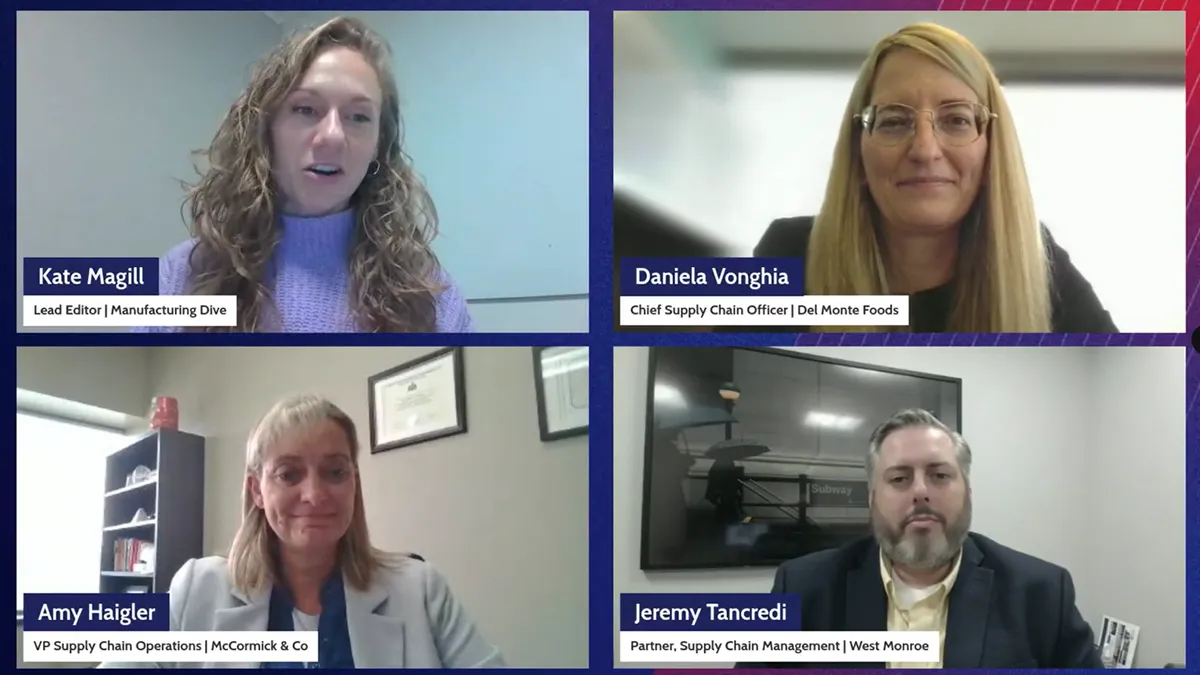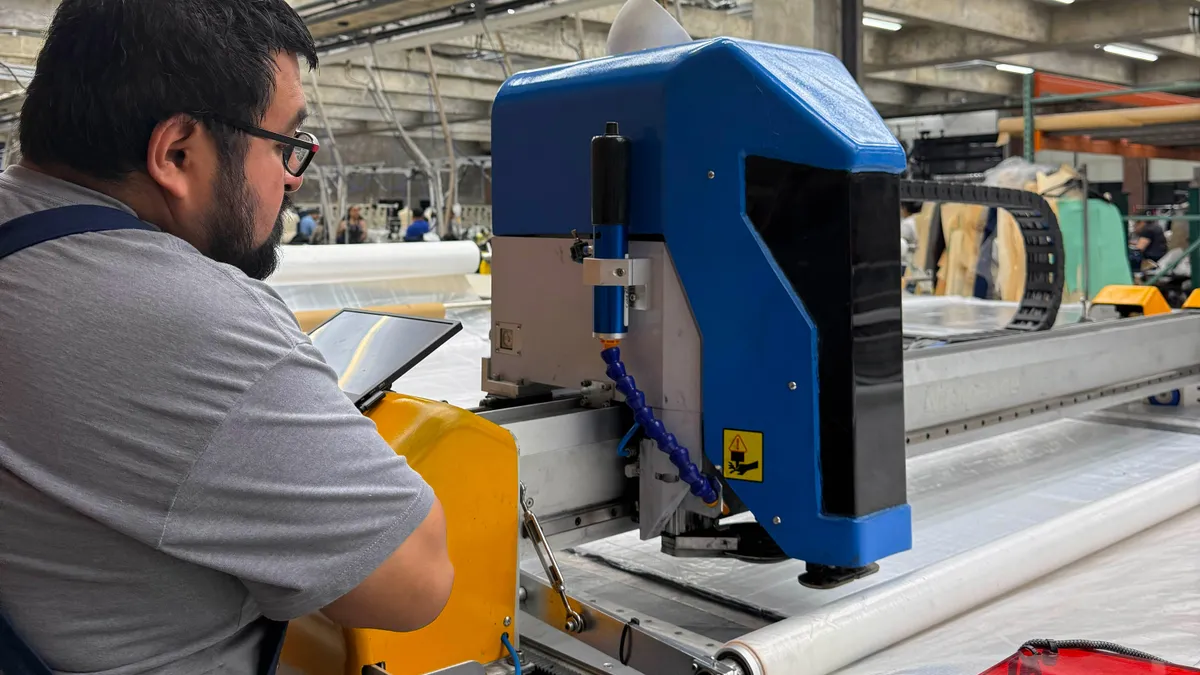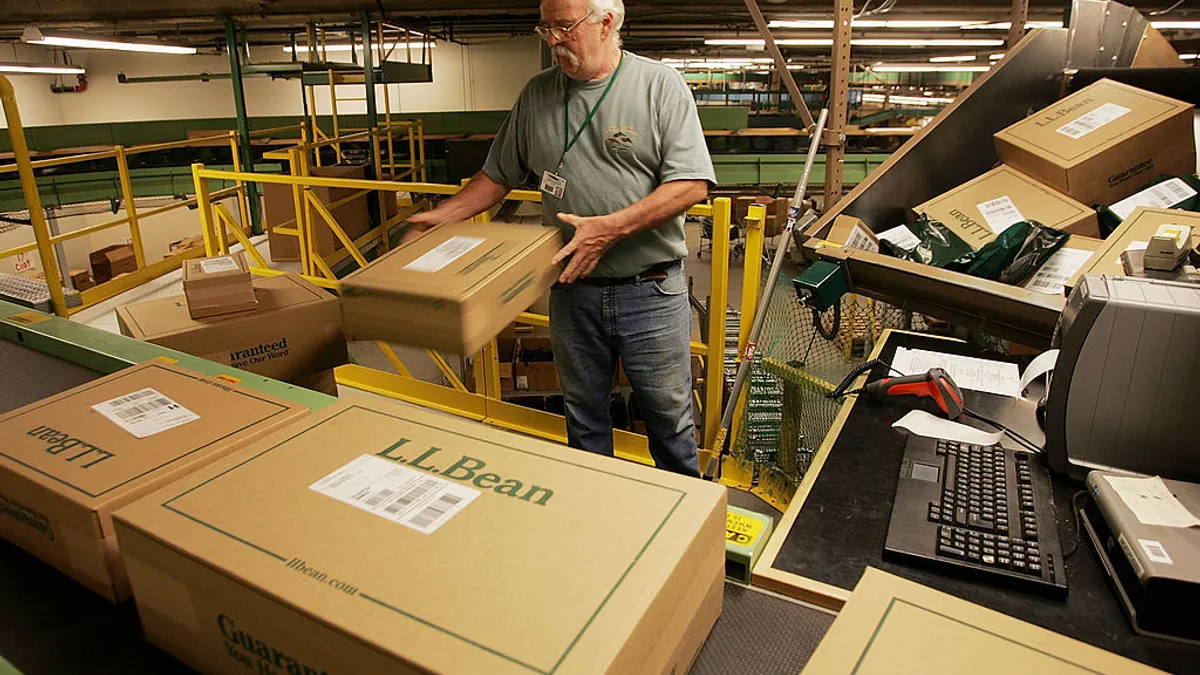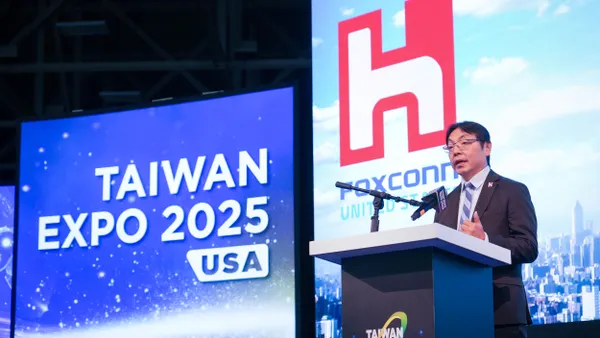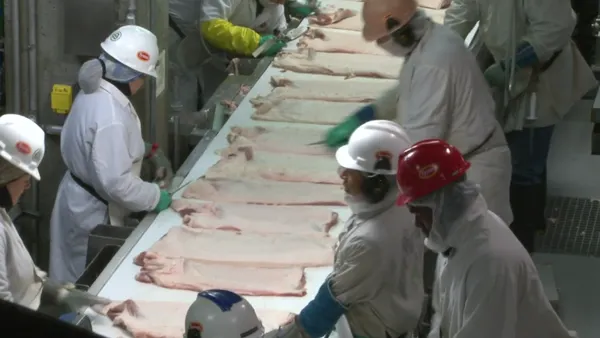Editor’s note: This story highlights takeaways from an April 9 event hosted by Manufacturing Dive and Food Dive. Register here to watch the replay on demand.
With global trade in flux as the Trump administration moves forward with its tariff strategy, U.S. food manufacturers are looking to be flexible and swift with their decision-making to mitigate higher costs and supply chain pressures.
Supply chain experts dug into this topic on Wednesday during a virtual State of Innovation in Food Manufacturing event hosted by Manufacturing Dive and sister publication Food Dive. Speakers included Amy Haigler, McCormick & Co.’s VP of supply chain operations in the Americas; Daniela Vonghia, Del Monte Foods’ chief supply chain officer; and Jeremy Tancredi, partner of operations excellence and supply chain management at West Monroe.
The event took place on the same day that President Donald Trump announced a 90-day pause on most reciprocal tariffs. That action effectively made all countries subject to a 10% baseline tariff — except for China, which is facing a higher 125% duty on goods brought into the United States.
“Every day, even in the last hour, we have some new news on tariffs and things that can interrupt our supply chain,” Haigler said. “Having agility in everything we do, in every operation and every formula, is the key for our manufacturing supply chain right now.”
McCormick’s major sales, distribution and production hubs are in North America, Europe and China, according to a securities filing. The company has 28 manufacturing plants globally, including three located in China: Guangzhou, Shanghai and Wuhan.
Amid the trade uncertainty, Haigler said one of McCormick’s strengths has been leveraging its vast network of suppliers responsible for more than 20,000 different raw materials across the world. This allows the ingredients giant to “make changes based on availability and sourcing decisions, and kind of consistently tweak our products,” she said.
Del Monte Foods, one of the largest U.S. producers of canned vegetables and fruits, is making similar sourcing and supplier decisions, as well as preparing for potential supply chain impacts.
“We’re doing a lot of scenario planning, and we’re making risk-based decisions wherever we can and where we feel it makes sense to really make sure that we don’t get stuck,” Vonghia said.
Beyond tariffs, manufacturers are looking to automate certain jobs and tasks to fill labor gaps. They are also implementing AI software to enhance workflow efficiency and supply chain visibility, which is especially vital during turbulent times.
However, digital transformations have shown the importance of ensuring companies have quality data at their disposal that aligns to their most critical KPIs, Vonghia said.
As McCormick advances its sourcing strategy with real-time information and data, Haigler encouraged other companies to make sure their master data is “clean and up to date.”
“If you try to upgrade technology with bad data to start, it’s not a great recipe for success,” she said.
While some manufacturers have already announced plans to expand in the U.S., partially as a move to avoid tariffs, others are taking a wait-and-see approach. Tancredi said distributors should not overhaul their supply chains just yet.
“We really want to make sure that as this is happening, [clients are] looking for other areas to potentially offset costs,” he said. “And not making some of those decisions that may look good today under today’s landscape, but as it changes tomorrow, next week, next month, it doesn’t become as good a solution.”
A byproduct of higher tariffs is rising building materials costs. Warehousing lease costs are already up 12% to $9.30 per square foot over last year for third-party logistics providers, according to a recent industry survey from WarehousingandFulfillment.com.
Couple rising storage costs with tariffs, and “that’s definitely going to impact the opportunity to grow your supply chain,” Tancredi said.



